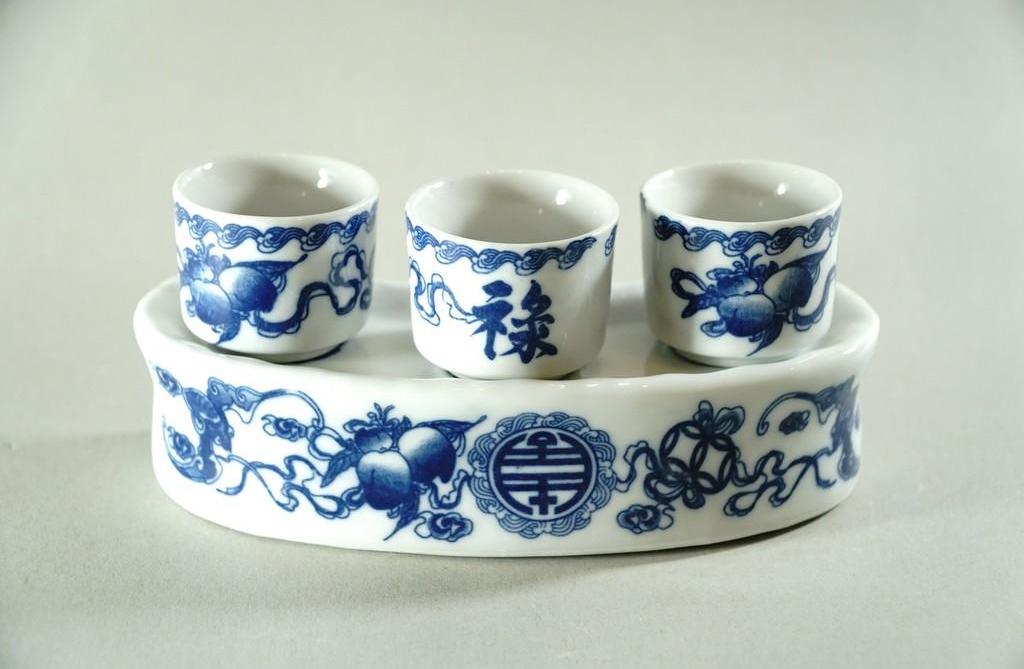Worshiping ancestors is a deeply imprinted tradition in Vietnam. This custom, although may differ in regions, is all conducted in the sacred space of the altar. For this reason, homeowners give a lot more care to altar items than ordinary household ones. And they all favour ceramic products. Why is it so? And how to use them properly? Let’s find it out in this last instalment of Vietnamese ceramics & pottery!
The Altar Centerpieces
1. Incense Diffuser
Unlike burning incense sticks, using the diffuser is meant to create a misty fog around the altar. This is believed to not only purify the air but also show their filial piety to their ancestors. And a ceramic incense diffuser is great for such a task. The ceramic material keeps the diffuser hot enough to slowly burn the fragrant incense and create the desired fog-like smoke.
The usual place for the incense burner is in the middle of the altar, guarded by a pair of cranes and candlesticks on both sides.
2. Incense Bowl
Vietnamese tradition considers the incense bowl the soul of the family’s altar, a spiritual object connecting the living and the dead. To them, the incense bowl is where their ancestors come to dwell on special occasions like death anniversary or Tet holiday.
In the past, people favored the white glazed ceramic bowl with blue patterns. But over time, ceramic items with 3D-effect imagery like below are in fashion.
The incense bowl is placed in front of the incense diffuser, but in a lower position so that it’s clear to see both from outside.
3. Ceramic Oil Lamp
Fire was the factor determining the civilization of mankind in the past. In Vietnam, the oil lamp is introduced to the altar as a way to show gratitude towards the hard work of creating and keeping fire.
Also, the kerosene lamp is an important reminder of the past that Vietnamese people hold dear to their hearts. Not to mention, Feng Shui sees this lamp as a protective object to ward off evil spirits.
If there is only one lamp, you can place it in the middle, in front of the deceased’s image or tablet. If you use a pair of altar lamps, place them symmetrically on the far sides of the altar for the light to travel more easily.
4. Ceramic Jars (Chóe)
Vietnamese believe that the afterlife exists. And if they need rice, salt, and water in this world, it is the same in the other world.
Choé, or ceramic jars are typically containers for Vietnamese to store ingredients like rice, salt, and water. Having them on the altar is the wish to have a lot of blessing from the ancestors for a bountiful life.
The classic Bat Trang mini jars like below are a favorite choice of lots of families. On the altar, they are placed on both sides, quite close to the incense bowl. But remember this order: water jar in the middle, rice and salt jars on the side.
5. Trays
When it comes to ancestor worshipping, having a high-quality tray for offered food on the altar is utterly important. Unlike normal ceramic plates, the kind used for the altar is often bigger and has a small pillar underneath. This is mainly to help the plate look taller and support more weight from the fruits.
The usual position for this ceramic tray is at the center of the altar, before the incense bowl and after the tea set.
6. Ceramic Tea Set
Vietnamese people love their tea and there’s a whole tea culture to prove it! So, it makes total sense that they want to offer this delicious drink to their ancestors. Plus, this tradition may have a link with a popular Buddhist belief of “when eating a fruit, think of the man who planted the tree”.
A standard worshiping ceramic tea set comes in mini size, consisting of one pot and a set of three or five teacups. In terms of glazing, celadon is something you will find in a lot of altar ceramic tea sets. But these days, something more intricate like below is also in favor.
On the altar, you can place the tea set on either side, next to the wine cup set.
7. Ceramic Wine Cup Set
The ceramic wine cup set, known in Vietnamese as bộ kỷ chén, includes three small rice wine cups resting on a tiny tray. These cups are often used to store wine on special occasions and water on normal days.
According to traditions, the cup in the middle is for the god of heaven, and the other two are for the ancestors and holy spirits respectively.
Again, ceramic material remains the number one choice for most families. On the altar, this wine cup set is at the middle, a little further to the edge of the table.

8. Fortune Vases
Lộc bình means “a pot of fortune”, often made of ceramics, glass, gold, or wood. However, it is the process of making ceramics in the kiln that makes people choose this material. The firing process symbolizes a harmony of heaven and earth elements to give birth to a beautiful, endurable product. And thus, using ceramic fortune vases give the homeowner better luck in life.
At first glance, the fortune vases aren’t that different from normal ones. But what sets them apart is the decoration of holy creatures.
On the altar, fortune vases are on the further sides, looking like guards to the incense bowls.
A Few Rules
Nowadays, worship items can be made of bronze, ceramics, or wood. But many Vietnamese families prefer ceramics for their traditional values, high aesthetics, and reasonable prices.
The number of spiritual ceramic items is not limited, but you definitely should shop for the most essential, explained above in this article. Besides, these are basics dos and don’ts:
Dos
- Buy from traditional and renowned ceramic villages.
- Choose items with traditional style designs and patterns.
- Choose a set that suits your house’s Feng Shui.
- Choose the right size for the space of the altar.
- Replace broken or damaged items immediately.
Don’ts
- Buy used items.
- Choose low-quality material items.
- Miss out on any essential items.



No Comments